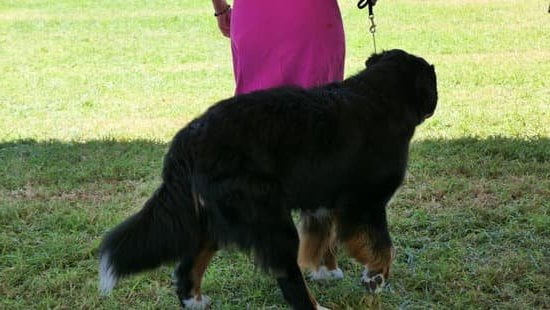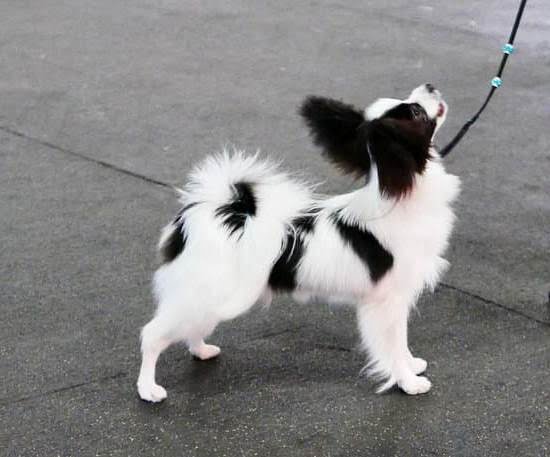Training your dog to not be destructive is essential for both their well-being and the harmony of your home. Destructive behavior can range from chewing on furniture and shoes to digging up your garden or causing messes indoors.
Not only can this behavior be frustrating, but it can also have negative consequences for your dog’s health and safety. In this article, we will explore the importance of training your dog to be non-destructive, as well as provide effective strategies and techniques to achieve this goal.
Destructive behavior in dogs can lead to a myriad of problems. It can result in costly damage to your belongings, create tension within relationships, and even pose a threat to your pet’s own safety. By training your dog to be non-destructive, you are promoting a calm and harmonious environment where both you and your furry companion can thrive.
On the other hand, having a non-destructive dog brings numerous benefits. It allows you to have peace of mind knowing that your possessions are safe and that you won’t come home to chaos after being away. Additionally, a non-destructive dog is happier and healthier since they are not engaging in behaviors that could cause harm or stress.
In the following sections of this article, we will delve into the causes of destructive behavior in dogs, how to create an environment that discourages such behavior, techniques for setting clear rules and boundaries, positive reinforcement training methods, diversion tactics, addressing separation anxiety and boredom, as well as knowing when professional help may be necessary. Through patience, consistency, and understanding these strategies, you will learn how to effectively train your dog to not be destructive.
Assessing the causes of destructive behavior in dogs
Understanding the reasons behind your dog’s destructive behavior is crucial in order to effectively address and modify their habits. By identifying the underlying causes, you can implement targeted strategies to redirect their energy towards more appropriate outlets. Here are some factors to consider when assessing the causes of destructive behavior in dogs:
- Lack of Physical and Mental Stimulation: Dogs are active animals that require both physical exercise and mental stimulation to thrive. Without enough opportunities for play, exploration, and mental engagement, dogs may resort to destructive behaviors as a way to release pent-up energy and alleviate boredom. Consider whether your dog is getting enough exercise and mental enrichment on a daily basis.
- Separation Anxiety: Some dogs experience separation anxiety when left alone, which can manifest as destructive behaviors such as excessive chewing or scratching. This anxiety stems from a fear of being separated from their owners and can be accompanied by other symptoms like barking, pacing, or soiling the house. Understanding if your dog exhibits signs of separation anxiety can help you develop strategies to ease their distress.
- Underlying Medical Conditions: It’s important to rule out any underlying medical conditions that may be contributing to your dog’s destructive behavior. Pain, discomfort, or certain health issues could lead them to seek solace by engaging in destructive habits. If you notice sudden changes in your dog’s behavior or suspect they might be in pain, consult with a veterinarian for a thorough examination.
Once you have identified the potential causes of your dog’s destructive behavior, you’ll be better equipped to address these issues proactively through appropriate interventions and training techniques.
- Create an environment that minimizes triggers for destructive behaviors by removing access to items that tempt your dog (e.g., shoes or furniture) when unsupervised.
- Provide stimulating toys such as chew toys or puzzle toys to keep your dog occupied and mentally engaged.
- Gradually desensitize your dog to being alone by practicing short periods of separation and gradually increasing the duration.
- Implement positive reinforcement training techniques, rewarding good behavior and redirecting your dog’s attention away from destructive acts.
Keep in mind that modifying destructive behavior takes time and consistency. Understanding the root causes of such behavior is the first step towards finding effective solutions for your four-legged companion. In the next section, we will explore how to create a safe and stimulating environment for your dog to help discourage destructive tendencies.
Creating a safe and stimulating environment for your dog
Organizing the living space to minimize temptation
One of the first steps in training your dog to not be destructive is creating a safe and stimulating environment for them. This means organizing your living space in a way that minimizes temptation for your dog to engage in destructive behaviors. Start by identifying objects or areas that are particularly appealing to your dog. This could include items such as shoes, furniture, or garbage cans.
To prevent access to these tempting items, consider using baby gates or closing off rooms where they are stored. If this is not possible, you can also use deterrents such as bitter sprays or motion-activated alarms to discourage your dog from approaching certain areas. Additionally, it is important to keep valuable or fragile items out of reach and properly secured so that they cannot be damaged.
Providing appropriate toys and activities to keep your dog occupied
Another important aspect of creating a non-destructive environment is providing your dog with appropriate toys and activities to keep them occupied. Boredom often leads dogs to engage in destructive behavior as a way of relieving their energy or frustration. To prevent this, offer a variety of toys that are mentally stimulating and physically engaging.
Interactive puzzle toys, Kong toys filled with treats, and chew toys specifically designed for dogs can provide hours of entertainment while keeping their jaws and minds active. It may take some trial and error to find the toys that best suit your dog’s preferences, but once you do, replace any inappropriate chewing objects with these acceptable alternatives.
In addition to toys, regular exercise is crucial for preventing boredom and destructive behavior. Set aside designated playtime throughout the day where you engage in activities such as walking, playing fetch, or engaging in interactive training sessions. By providing both mental stimulation and physical exercise through proper toys and activities, you can create an environment that discourages destructive behavior in your dog.
Setting clear rules and boundaries
When dogs are unsure about what is expected of them, they may resort to destructive behaviors as a way to relieve anxiety or boredom. By setting clear rules and boundaries, you communicate to your dog what behaviors are acceptable and what are not. This clarity helps them understand their role in the household and reduces the likelihood of engaging in destructive behaviors.
To set clear rules and boundaries for your dog, it is important to establish consistency in your expectations. Make sure that all family members are on the same page and reinforce the same rules consistently. Inconsistency can confuse your dog, making it more difficult for them to understand what is expected of them.
Teaching basic obedience commands is also crucial in reinforcing discipline and setting boundaries. Commands such as “sit,” “stay,” “leave it,” or “drop it” can help redirect your dog’s attention away from destructive behaviors. These commands should be taught using positive reinforcement techniques, such as treats or praise. Remember to reward good behavior promptly and consistently to reinforce the desired actions.
By setting clear rules and boundaries for your dog’s behavior, you are providing them with a sense of structure, consistency, and guidance. This helps prevent destructive tendencies by creating a well-defined framework within which your dog can thrive.
| Importance | Tips |
|---|---|
| Establishing consistency in expectations | Ensure all family members reinforce the same rules consistently. |
| Teaching basic obedience commands | Commands such as “sit,” “stay,” “leave it,” or “drop it” can help redirect your dog’s attention from destructive behaviors. |
Positive reinforcement training techniques
Utilizing rewards and praises to encourage good behavior
One of the key aspects of positive reinforcement training is rewarding your dog for exhibiting desirable behaviors. This can be done by offering treats, verbal praise, or even playtime. When your dog follows a command or engages in appropriate behavior, immediately provide positive reinforcement to reinforce that behavior. For example, if your dog refrains from chewing on furniture and instead plays with their designated chew toy, praise them enthusiastically and offer a treat.
It’s important to note that timing is crucial when it comes to implementing positive reinforcement. The reward should be given immediately after the desired behavior occurs so that your dog understands what they are being rewarded for. Consistency is also key – make sure to reward your dog every time they demonstrate the desired behavior, as this will strengthen the connection between the action and the reward.
Avoiding punishment-based methods that may worsen destructive tendencies
While it can be frustrating and tempting to resort to punishment when dealing with destructive behavior, it’s important to avoid these methods as they can actually exacerbate the problem. Punishment-based techniques such as yelling at or physically reprimanding your dog may cause fear or anxiety which can lead to more destructive behaviors or even aggression.
Instead, focus on redirecting and ignoring unwanted behaviors while rewarding alternative good behaviors. Time-outs or temporarily denying attention without physical force can also be effective when used appropriately. It’s essential to remain patient and consistent throughout the training process, as lasting changes take time.
By utilizing positive reinforcement techniques, you not only teach your dog what behaviors are desired but also build a strong bond based on trust and understanding. This approach encourages your dog to actively seek positive interactions and rewards, leading to a more enjoyable and non-destructive lifestyle for both you and your furry companion.
Diverting destructive behavior through redirection
One effective way to train your dog to not be destructive is through the technique of redirection. By redirecting your dog’s destructive behavior to more appropriate outlets, you can help them develop healthier habits and prevent damage to your belongings.
To begin with, it is important to teach your dog alternative outlets for their energy and frustration. Providing them with interactive toys or puzzles can stimulate their minds and keep them occupied. Puzzle toys that dispense treats when solved or toys that require problem-solving skills are great options. Additionally, engaging in regular exercise sessions can help burn off excess energy and provide a positive outlet for their natural instincts.
Another aspect of redirecting destructive behavior is teaching your dog what they are allowed to do instead of focusing on what they should not do. For example, if your dog tends to chew on furniture, provide them with appropriate chewing toys and consistently encourage them to chew on those instead. Reinforce this behavior by praising and rewarding them when they choose the correct object to chew on.
In some cases, it may also be helpful to block access to certain areas or objects that trigger destructive tendencies in your dog. Creating physical barriers or using baby gates can limit their access and prevent them from engaging in unwanted behaviors. By creating a safe environment free from temptations, you can set your dog up for success in breaking their destructive habits.
Remember, redirecting destructive behavior is a process that requires patience and consistency. It may take time for your dog to understand which behaviors are acceptable and which are not. Be persistent in providing alternative outlets for their energy, reinforcing positive behaviors, and actively preventing access to triggering objects or areas. With time and effort, you can successfully divert your dog’s destructive tendencies towards more appropriate activities while creating a harmonious living environment for both you and your furry friend.
Addressing separation anxiety and boredom
Separation anxiety and boredom are common causes of destructive behavior in dogs. When left alone, dogs may experience anxiety and resort to destructive behaviors as a way to cope with their emotions. It is important for dog owners to address these issues in order to prevent destructive behaviors and create a more peaceful environment for both the dog and the owner.
To combat separation anxiety, it is essential to implement strategies that help the dog feel more comfortable when left alone. Gradual desensitization can be effective in reducing separation anxiety. This involves gradually increasing the amount of time the dog is left alone, starting with short periods and gradually working up to longer durations.
Additionally, creating a positive association with being alone can help alleviate anxiety. This can be done by giving your dog special toys or treats that are only given when they are left alone.
Boredom is another common cause of destructive behavior in dogs. Dogs need mental stimulation and physical exercise to keep them happy and occupied. Providing interactive toys or puzzles can keep your dog mentally stimulated while you are away. These toys require problem-solving skills which can help tire out your pup as well as give them an outlet for their energy.
| Separation Anxiety | Boredom |
|---|---|
| – Implement gradual desensitization | – Provide interactive toys or puzzles |
| – Create positive associations with being alone | – Give mental stimulation through problem-solving toys |
Seeking professional help if needed
Sometimes, despite our best efforts, training our dogs to be non-destructive can be a challenging task. If you have tried various strategies and techniques without success, it may be time to consider seeking professional help. A professional dog trainer or behaviorist can provide valuable guidance and expertise in resolving destructive habits.
But how do you know when it’s time to consult a professional? Here are some signs that indicate professional assistance might be beneficial:
- Persistent destructive behavior: If your dog continues to engage in destructive behaviors even after consistent training and efforts to redirect their behavior, it may indicate a deeper issue that requires expert intervention.
- Aggressive or dangerous behavior: Destructive behaviors that escalate into aggression or pose a danger to you, your family, or other animals should not be taken lightly. A professional can assess the situation and provide the necessary guidance to address these issues safely.
- Severe separation anxiety: If your dog shows extreme distress and anxiety when left alone, causing them to engage in destructive behaviors, a professional can help develop strategies specific to separation anxiety.
- Frustration or lack of progress: If you find yourself feeling frustrated and unable to make progress in training your dog, seeking the help of a professional can offer fresh insights and techniques tailored to your unique situation.
When consulting a professional, it is essential to choose someone qualified and experienced in dog training and behavior modification. Look for certifications from reputable organizations such as the Certification Council for Professional Dog Trainers (CCPDT) or the International Association of Animal Behavior Consultants (IAABC).
Remember that seeking professional help does not mean you have failed as a dog owner; rather, it shows your commitment to providing the best care for your furry friend. By taking this step, you are demonstrating your dedication towards creating a harmonious and non-destructive environment for both you and your beloved pet.
Conclusion
In conclusion, training your dog to not be destructive is crucial for both their well-being and the harmony within your home. As highlighted throughout this article, destructive behavior can have negative consequences such as damaged property, injury, and even strained relationships. On the other hand, having a non-destructive dog brings numerous benefits, including a peaceful environment, improved obedience, and a stronger bond between you and your furry companion.
By understanding the underlying causes of destructive behavior and implementing the strategies outlined in this article, you can create a safe and stimulating environment for your dog. This includes organizing their living space to minimize temptation, providing appropriate toys and activities to keep them occupied, setting clear rules and boundaries, and employing positive reinforcement techniques. Redirecting their energy and frustration through alternative outlets, as well as addressing separation anxiety and boredom are also essential aspects of training.
It’s important to celebrate your dog’s progress along the way and acknowledge their commitment to a non-destructive lifestyle. Despite any setbacks or challenges encountered during the training process, persistence and patience are key. Remember to recap the key strategies and techniques covered in this article regularly to help solidify their implementation.
If you find that you’re struggling or not making significant progress in curbing destructive habits despite your efforts, don’t hesitate to seek professional help. Consulting a professional dog trainer or behaviorist can provide invaluable guidance tailored to your dog’s specific needs. They will offer expertise on resolving destructive behaviors effectively while ensuring the overall well-being of your canine companion.
Training your dog to not be destructive requires time, effort, dedication, and consistency. The journey may have its ups and downs but remember that every small step toward progress is worth celebrating. With patience and perseverance on both ends – yours as an owner and theirs as a learner – you will see positive changes that reinforce healthy behavior patterns in no time.
Frequently Asked Questions
How do I stop my dog from being destructive?
To stop your dog from being destructive, it is important to understand that dogs often engage in destructive behavior out of boredom or frustration. One effective approach is to ensure your dog receives plenty of physical and mental exercise daily through activities such as walks, playtime, and puzzle toys.
Providing appropriate chew toys can also redirect their need for chewing towards acceptable objects. Additionally, creating a safe and stimulating environment by puppy-proofing your home and using baby gates or crate training when you cannot supervise them can prevent destructive behaviors.
Why does my dog want to destroy everything?
Dogs may want to destroy things due to various reasons including teething, anxiety, lack of stimulation, or seeking attention. Puppies, in particular, explore the world through their mouth and use chewing as a way to alleviate teething discomfort. Dogs with separation anxiety might engage in destructive behavior as a coping mechanism when left alone.
Moreover, if a dog feels bored or isolated, they may seek stimulation by destructively chewing on furniture or other items. Occasionally, some dogs might exhibit destruction-seeking behaviors because they have not learned appropriate manners or boundaries. Understanding the underlying cause behind your dog’s destructive tendencies will help address the issue more effectively.
How do you discipline a dog for tearing up things?
When disciplining a dog for tearing up things, it is important to remember that punishment alone is often ineffective and can even worsen the behavior or harm the human-animal bond.
Instead of resorting to punishment methods like yelling or physical corrections which may lead to fear or aggression issues over time, it is crucial to employ positive reinforcement techniques for teaching appropriate behavior.

Welcome to the blog! I am a professional dog trainer and have been working with dogs for many years. In this blog, I will be discussing various topics related to dog training, including tips, tricks, and advice. I hope you find this information helpful and informative. Thanks for reading!





